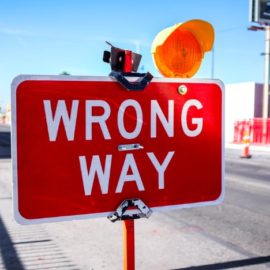

This article is an excerpt from the Shortform book guide to "Healing the Shame that Binds You" by John Bradshaw. Shortform has the world's best summaries and analyses of books you should be reading.
Like this article? Sign up for a free trial here.
What drives people to create different versions of themselves? How do childhood experiences shape the roles we play in our relationships?
False selves emerge when shame becomes deeply rooted in our identity. People often develop these alternate personas as protective shields, crafting different versions of themselves for their culture, their life path, and their relationships.
Keep reading to discover the three types of false selves and how they influence our daily interactions, relationships, and life choices.
Our False Selves
John Bradshaw contends that internalized shame sometimes manifests by forcing us to develop a false self. He explains that, when toxic shame becomes part of our identity, it convinces us that our authentic self is shameful and unworthy; therefore, we disown our true self. As a result, we lose touch with our authentic needs and desires, and we must mold a false identity to guide our actions in different scenarios since we don’t have an authentic self to do so.
(Shortform note: In Daring Greatly, Brown reiterates that shame causes us to disconnect from our true selves and adopt a false identity we show to the world. She adds that this is perilous because it prevents us from being vulnerable—exposing our true selves to people. Being vulnerable is crucial to living a fulfilling life—what she calls living “wholeheartedly”—because it allows us to build genuine connections with others. These genuine connections cultivate the feelings of love and belonging that are necessary to feel worthy—the opposite of feeling shame.)
There are three “false selves” that people with toxic shame build: the cultural self, our self trajectory, and our relational self.
False Self #1: Our Cultural Self
First is the cultural self—our role in society. According to Bradshaw, this self is dictated by our “sex roles.” We strive to be the perfect embodiment of society’s concept of a man or woman.
(Shortform note: Since the publication of Bradshaw’s book, we’ve gained a better understanding of the difference between sex and gender. While sex refers to our sexual anatomy, gender refers to the social roles of our gender identity—whether that be male, female, or nonbinary. As such, “gender roles” would be a more accurate term than “sex roles,” since Bradshaw uses the term in the context of social roles and identity.)
False Self #2: Our Self Trajectory
Second is our self trajectory—the life path we plan out for ourselves. According to Bradshaw, this includes our career aspirations, values, and self-image. Since toxically shamed people are unable to connect to their authentic needs and desires, they must shape their goals and values based on external influences like parents, friends, or media.
(Shortform note: While adopting goals, values, beliefs, and other factors from external sources may play a more extreme role in identity formation for toxically shamed people, psychologists explain that it’s normal to a certain extent. The phenomenon is called social influence, and while it can be negative, it’s a common part of identity formation that occurs in our youth.)
False Self #3: Our Relational Self
Third is our relational self—the role we fill in our romantic and familial relationships. The role toxically shamed people play in adult relationships is usually the role they were taught to play as children due to their abandonment.
For example, a child who was abused and played the ghost role in their family will likely play a passive or submissive role in their adult relationships, failing to express their thoughts and feelings. They may also end up seeking a partner who abuses them in the same way they were abused as a child because that’s how they were taught to receive attention.
| Opposite Relational Roles Attract Childhood trauma often leads people to develop one of three problematic attachment styles. Psychologists add that not only do our childhood experiences shape our adult attachment style and relational role, but that people with opposite attachment styles often attract each other and potentially further traumatize each other. For example, an abused child who played a ghost role is more likely to develop an avoidant attachment style and end up in a relationship with an anxiously attached person. This may occur because each person is trying to fulfill unmet needs from childhood. For the anxious person, the relationship offers another chance to earn hard-to-get affection that they failed to win in childhood. On the other hand, the avoidant person’s need for independence is validated by the anxious person’s overwhelming need for intimacy and reassurance—their need for distance seems warranted due to the anxious person’s clingy behavior. This often leads to further relationship trauma, especially for the anxious person, whose abandonment wounds are likely to be triggered by the avoidant person’s distant behavior. |

———End of Preview———
Like what you just read? Read the rest of the world's best book summary and analysis of John Bradshaw's "Healing the Shame that Binds You" at Shortform.
Here's what you'll find in our full Healing the Shame that Binds You summary:
- How toxic shame develops and manifests in your life
- Why it’s important to externalize shame that’s internalized
- How to find happiness after expelling shame






